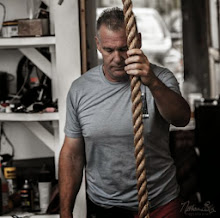I finally got the video "If Horses Could Speak" which I ordered in December! The video goes along with the Dr. Heuschmann's book "Tug of War: Classical vs Modern Dressage". If you are a therapist reading this blog save the $60 and buy the book first. The video is more like a documentary of what Dr. Heuschmann believes to be "classic". It is a beautiful piece of work from a film perspective, and wonderful to watch. It won't however teach you anything that you can use in your therapy sessions. I buy these kinds of things to use in my course, so they pay for themselves in the long run. Even as a rider you won't learn any new or old ways to train your horse.
Dr. Rolf stated that if you wanted to come to a new conclusion about something you needed to start with a new premise.(Actually this isn't her statement, she was repeating it.) Dr. Heuschmann encourages us to come to an old premise in training our horses--which I totally agree with--while using old premises about anatomy and biomechanics--which I disagree with.
The old premise that Dr. Heuschmann keeps to is that locomotion is caused by muscular contraction, that muscles are separate entities within the body and that fascia is found in specific "spots". He holds to an old style anatomy view of a trained veterinarian. I seriously doubt if Dr. Heuschmann uses any type of alternative therapy with his horses. He most certainly doesn't discuss the skeleton, nerves or fascia, other than as mentioned above, in this video or his book. (I haven't finished the book yet.)
I have a lot of respect for what he is doing and would love to talk with him. I plan to go to a clinic if and when he comes to the US. Or, perhaps, I should try and go to Germany and work with his horses, they could certainly benefit from it.
The lastest on the collection front. There are 3 main theories which I will call: the topline, the bottomline and the shoulder freedom theories.
The topline is a theory that is proposed by the "old" school represented by Dr. Heuschmann and Paul Belosak and such. This theory holds to the pyramid of training which has collection as the last part of training of the riding horse. It holds the supple back as sacrosanct--I totally agree--and assumes that the horse's front is lifted up (dorsally) and back (caudally) by the muscles of the rear and topline. This was seen to be so in experiments carried out at the McPhail research center with Paul Belasik riding a horse in piaffe, which is an extreme dressage movement.
The bottomline theory is proposed and championed by Dr. Bennett. She proposes that collection occurs throught the contraction of the "ring of muscles" on the bottomline of the horse, with little or no activity in the topline. This hasn't been tested in a research setting.
The shoulder theory has two parts to it: the shoulder only theory and the shoulders as the instigator theory--this is my theory so it gets the tricked out name. In this the shoulder only theory, proposed by Dr. Clayton the soft tissue of the thoracic sling propels the front end dorsally and caudally shifting the center of mass towards the rear. In my theory it is the thoracic sling that "allows" collection--moving the COM dorsally and caudally--through the freedom of two forelimbs coming more vertically,and the contraction of the topline and bottomline--sans psoas. Maybe this should be called the unifying theory of how a quadruped can start to move like a biped.
Any comments?
Wednesday, January 14, 2009
Subscribe to:
Post Comments (Atom)




No comments:
Post a Comment